|
Subfamily: Bovinae |
|
|
|
Syncerus caffer (African Buffalo) Buffalo are
massive, heavily built ungulates that resemble cattle. They are social and
can form herds consisting of several thousand animals. A dominance hierarchy
exists amongst adult bulls in the mixed herd. Cows also have a pecking order
within the heard. One of the “Big Five” in Africa, buffalo are a highly popular tourist
attraction in national parks, this makes them highly prized as an important
source of income. |
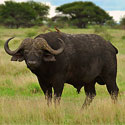 |
|
|
Tragelaphus strepsiceros (Greater kudu) |
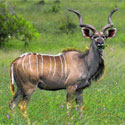 |
|
|
Tragelaphus angasii (Nyala) |
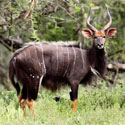 |
|
|
Tragelaphus scriptus (Bushbuck) |
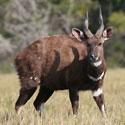 |
|
|
Tragelaphus spekii (Sitatunga) |
 |
|
|
Tragelaphus oryx (Eland) |
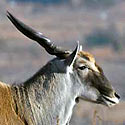 |
|
Subfamily: Antilopinae |
|
|
|
Connochaetes gnou (Black wildebeest) Black
wildebeest are endemic to southern Africa and inhabit the open grassland and
scrub woodland habitats, where they graze on grass mainly. They have a
characteristic nasal call “ge-nu”, from which the common name gnu is
derived. They are dark-coloured with a distinctive white horse-like tail.
Bulls defend territories while cows and their young range freely through
these territories. There are also bachelor herds. |
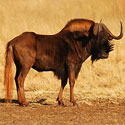 |
|
|
Connochaetes taurinus (Blue
wildebeest) Found in the savanna regions of southern
Africa, also with a large population in East Africa. Predominantly a grazer
of short green grass. They form large herds, especially when on migration to
better grazing grounds. In the breeding season the males try (not always
successfully) to hold a territory round their cows, with cows and young in a
territory numbering from 2 to 150. |
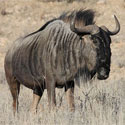 |
|
|
Alcelaphus lichtensteinii (Lichtenstein's hartebeest) |
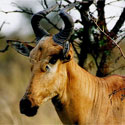 |
|
|
Alcelaphus buselaphus (Red
hartebeest) |
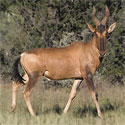 |
|
|
Damaliscus pagargys pygargus
(Bontebok) This subspecies of Damaliscus pygargus
is endemic to the fynbos with its original distribution lying on the fynbos
plains from the Agulhas plain through to about Mossel Bay. It was once
near extinction but is well-protected now. Social structure consists of
territorial males, female herds and bachelor herds. They graze mainly on
short grass but also occasionally browse. |
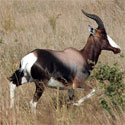 |
|
|
Damaliscus pygargus phillipsi
(Blesbok) Blesbok is endemic to the Grassland Biome of
southern Africa where it is a grazer, mainly on shorter grass. Social
structure consists of territorial males, female herds and bachelor herds but
in winter they form into large mixed herds. |
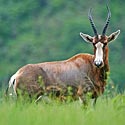 |
|
|
Damaliscus lumatus (Tsessebe) |
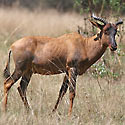 |
|
|
Hippotragus equinus (Roan) |
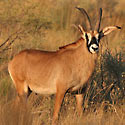 |
|
|
Hippotragus niger (Sable) |
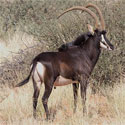 |
|
|
Oryx gazella (Gemsbok) |
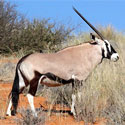 |
|
|
Philantomba monticola (Blue
duiker) |
|
|
|
Cephalophus natalensis (Red
duiker) |
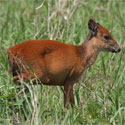 |
|
|
Sylvicapra grimmia (Common duiker) |
 |
|
|
Redunca arundinum (Southern
reedbuck, Reedbuck) |
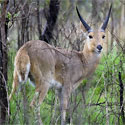 |
|
|
Redunca fulvorufula (Mountain reedbuck) |
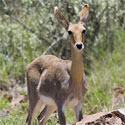 |
|
|
Kobus elpsiprymnus (Waterbuck) |
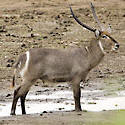 |
|
|
Kobus
leche (Lechwe) |
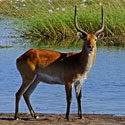 |
|
|
Kobus
vardonii (Puku) |
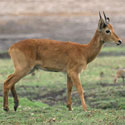 |
|
|
Pelea
capreolus (Grey rhebok) |
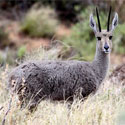 |
|
|
Antidorcus marsupialis
(Springbok) |
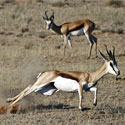 |
|
|
Madoqua damarensis (Damara dik-dik) |
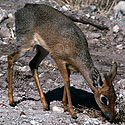 |
|
|
Ourebia ourebi (Oribi) |
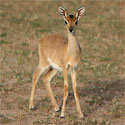 |
|
|
Raphicerus campestris (Steenbok) |
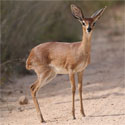 |
|
|
Raphicerus melanotis (Cape grysbok) |
|
|
|
Raphicerus sharpei (Sharpe's grysbok) |
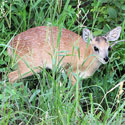 |
|
|
Aepyceros melampus
(Impala) |
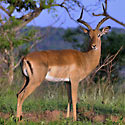 |
|
|
Aepyceros melampus petersi
(Black-faced impala) |
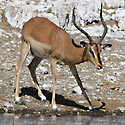 |
|
|
Oreotragus oerotragus
(Klipspringer) |
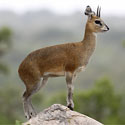 |
|
|
Neotragus moshatus (Suni) |
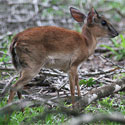 |
